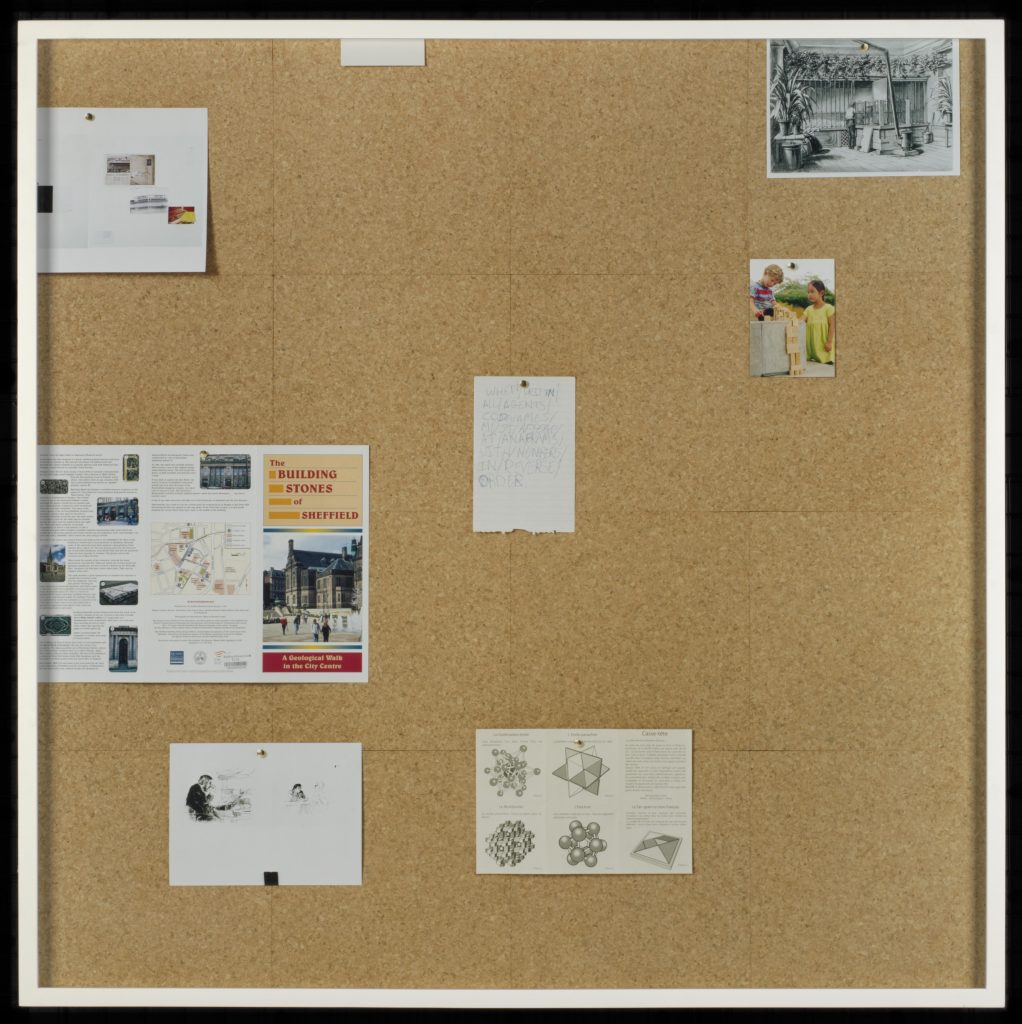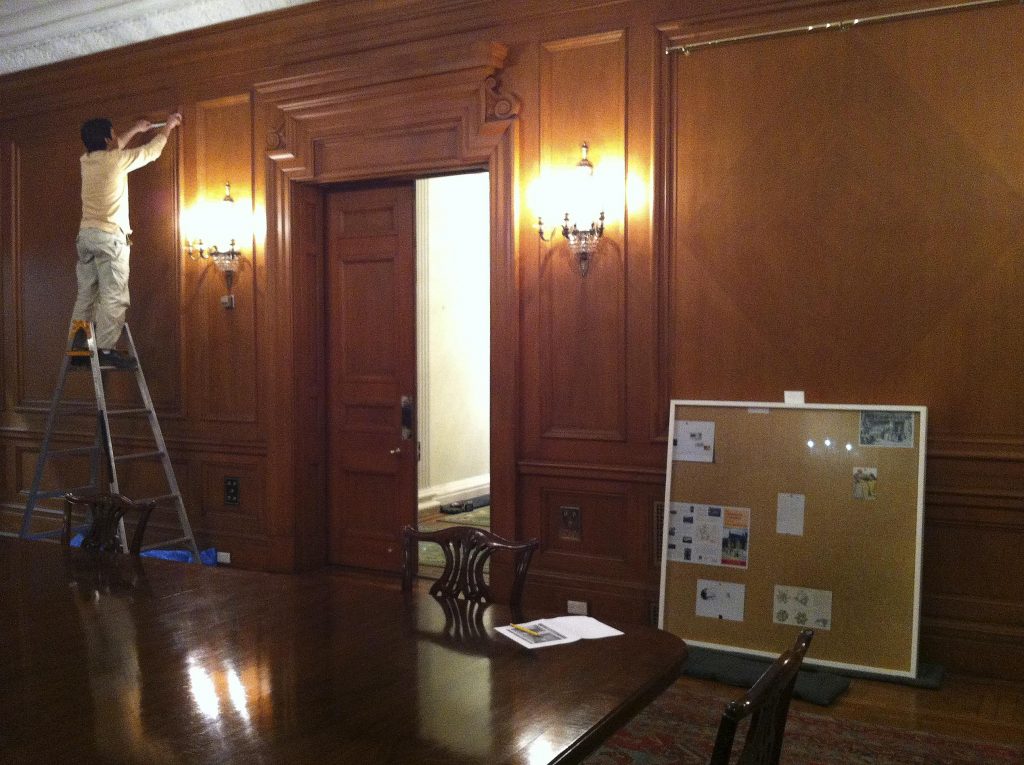A Very BIG Bean: the Collection in Japan
Between 2012 and 2016, the Collection worked with the British Ambassador to Japan, to curate new displays of art for the Embassy and Residence in Tokyo. In an account from 2015, the former Ambassador reflects on the role that art played in diplomacy.

Exterior of the British Embassy, Tokyo © Crown Copyright
On my watch
As a British diplomat, the Government Art Collection has been part of my life for over thirty years. But how do you actually use the Collection in an Embassy overseas, where life is dominated by ‘country business plans’ and deliverables? Here are some examples.
The Residence is busy…what we do is wildly various; conferences on nuclear decommissioning, or the launch of a new Stella McCartney collection, or celebrating the latest Thomas the Tank Engine book! We do big events with several hundreds, intimate dinners for the First Sea Lord, or working breakfasts with Japanese CEOs. For each of them, we need visitors to believe they have entered a new world: Britain@Tokyo.
Once a year the spouses of many of Japan’s most senior figures come to a lunch. These are people who have all lived in the UK, who want to be our ambassadors and are looking for ways to explain contemporary Britain to their friends. One year, hearing of the new art displays, they asked if I would give them a talk on the pieces. With help from the Collection curators, I pulled together an hour of slides, talking through the thinking and aesthetics behind the works. They loved the eighteenth and nineteenth century pieces, with the stories of places and people integral to Britain’s history. But they laughed most and asked the most questions about the twenty-first century pieces: ‘so that’s what the artist was getting at I’d never thought of it that way!’
The joy of the Collection is that it prompts questions and debate. Many of the artists on my walls have lived in London and Japan, and their themes are often about the translation from one to the other. Ryan Gander’s work A Very BIG Bean I Thought to Myself certainly produces challenge and discussion at dinner; and that in itself produces a good discussion about the value of challenge and dissent.
All this helps keep the reputation of the Embassy, and the reputation of the UK in a strong place. This year [2015], the UK rose to No 2 in the Global Innovation rankings. The Government Art Collection helps back that up, bringing the expected and the unexpected together in one stimulating place. It’s the job of diplomats overseas both to reinforce what is great about the UK, and surprise people out of what they think they know of us.
A Very BIG Bean I thought to myself

A Very BIG Bean, I Thought To Myself, 2006
colour photograph
Displayed at the British Embassy, Tokyo from 2014 – 2019

A Very BIG Bean, I Thought To Myself, 2006
colour photograph
Displayed at the British Embassy, Tokyo from 2014 – 2019
This conceptual work by Ryan Gander is presented in two parts. On the left is what appears to be a cork board on to which photographs, notes, diagrams and leaflets are pinned, and this hangs in a white frame behind glass. The photograph to the right shows another apparently identical cork board, but this one is bare except for the ghostly darkened patches where items were previously stuck.
Closer inspection reveals that the left half of the diptych is actually a photograph of a cork board with items pinned onto it, while the right hand side consists of an actual board made of cork tiles. In true trompe-l’œil style, Gander’s work is an elaborate optical illusion that draws upon multiple layers of fabric and referencing. The patterns left behind by the removal of elements from the bare cork board create a new grid-like composition. By using an everyday material, Gander draws attention to the universality of materials in art making – that anything can become ‘art’, but that it is the process of looking and making connections that adds significance or creates a story around an object.
The items presented on the left open up a range of association of ideas, building up a narrative of sorts. Included are, a leaflet on The Building Stones of Sheffield; a diagram of molecular structures; a photograph of children building wooden houses; and a scrappy handwritten note referring cryptically to code names. Although at first glance these things seem unrelated, on closer observation, they all refer to the act of construction.
Gander works across different media in his art practice, from installation, sculpture and writing, to performance, threaded with storytelling and dry humour. Bringing together and presenting us with seemingly random objects or ideas, his works invite us to piece together the connections.
Engaging with Gander’s work allows us to enjoy the discursiveness of a thought process, and the freedom to go on a mental journey of discovery. As he himself has said: ‘One day you wake up and manufacture a pair of gold earrings; the next you’re thinking about the semiotics of a Victorian lady’s fan.’

Installing Ryan Gander’s work in the British Embassy, Tokyo © Crown Copyright
Written by Tim Hitchens, former British Ambassador to Japan, and edited by Chantal Condron, Curator (Public Engagement and Research)